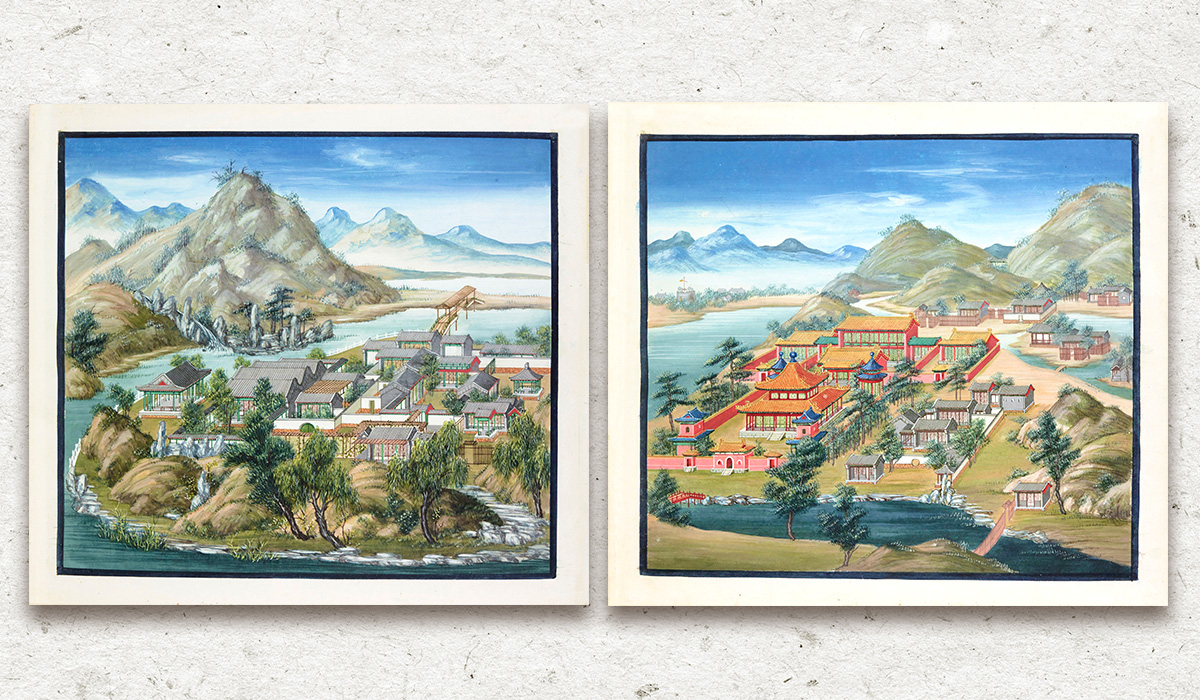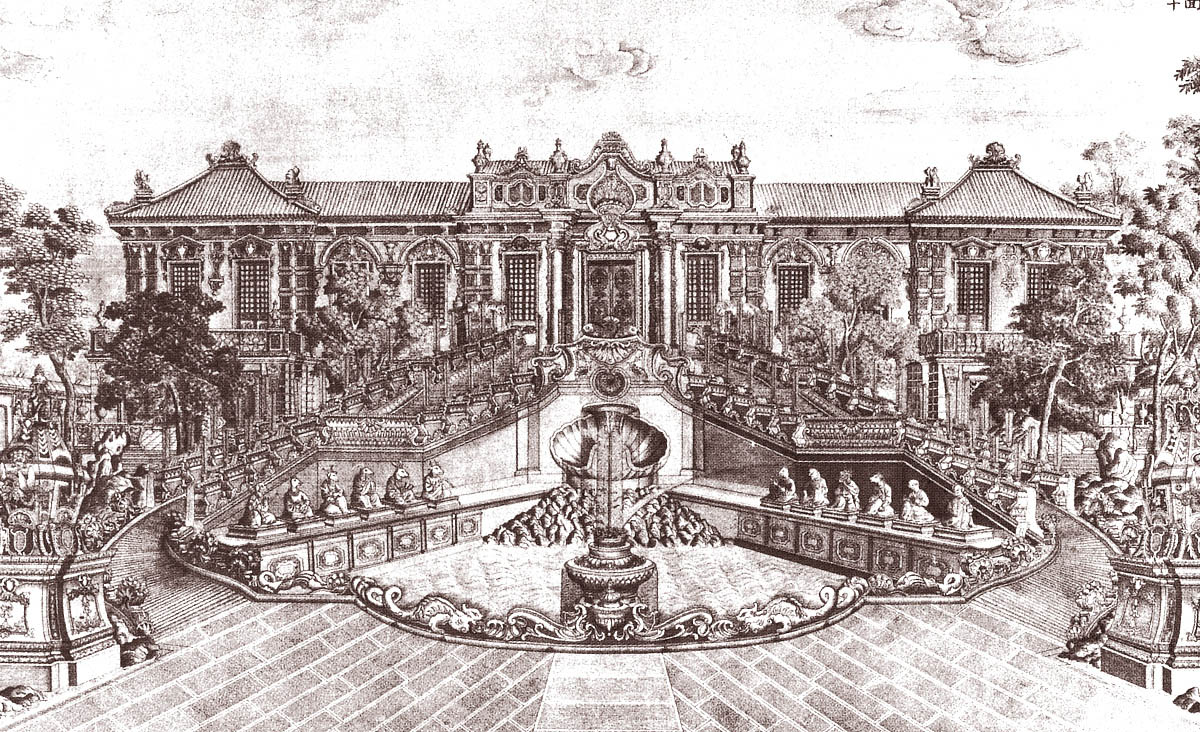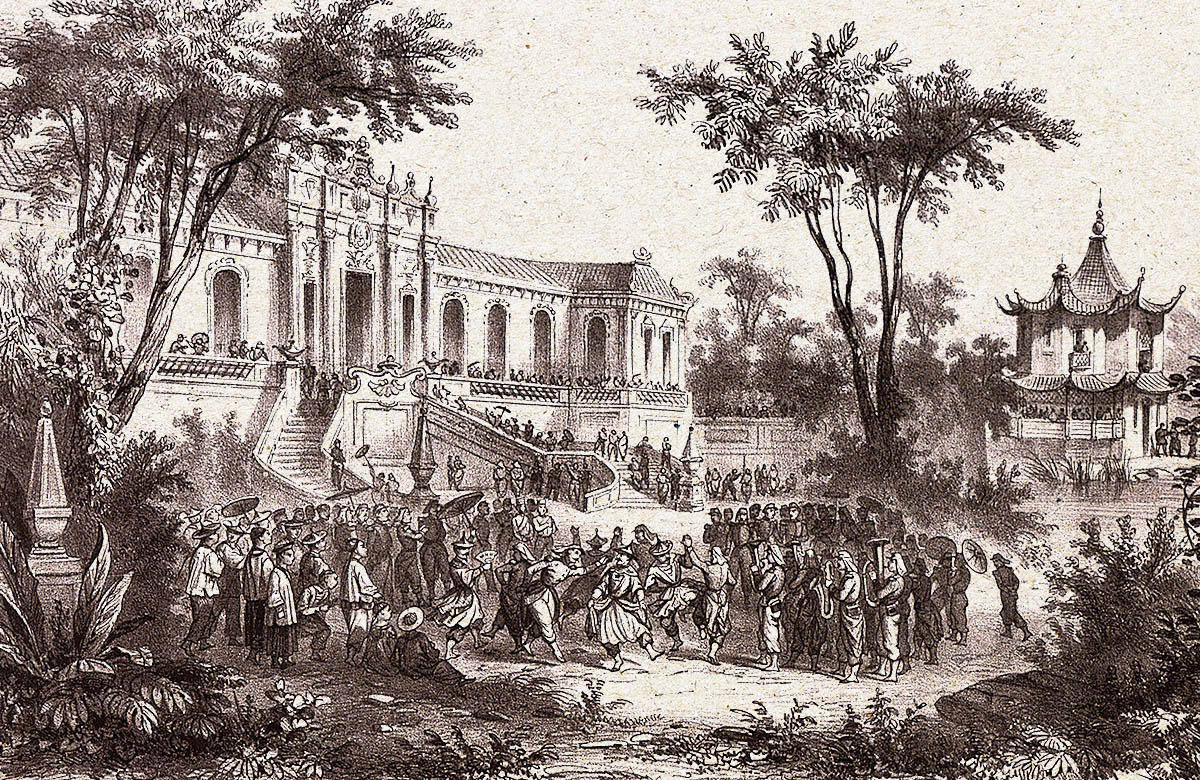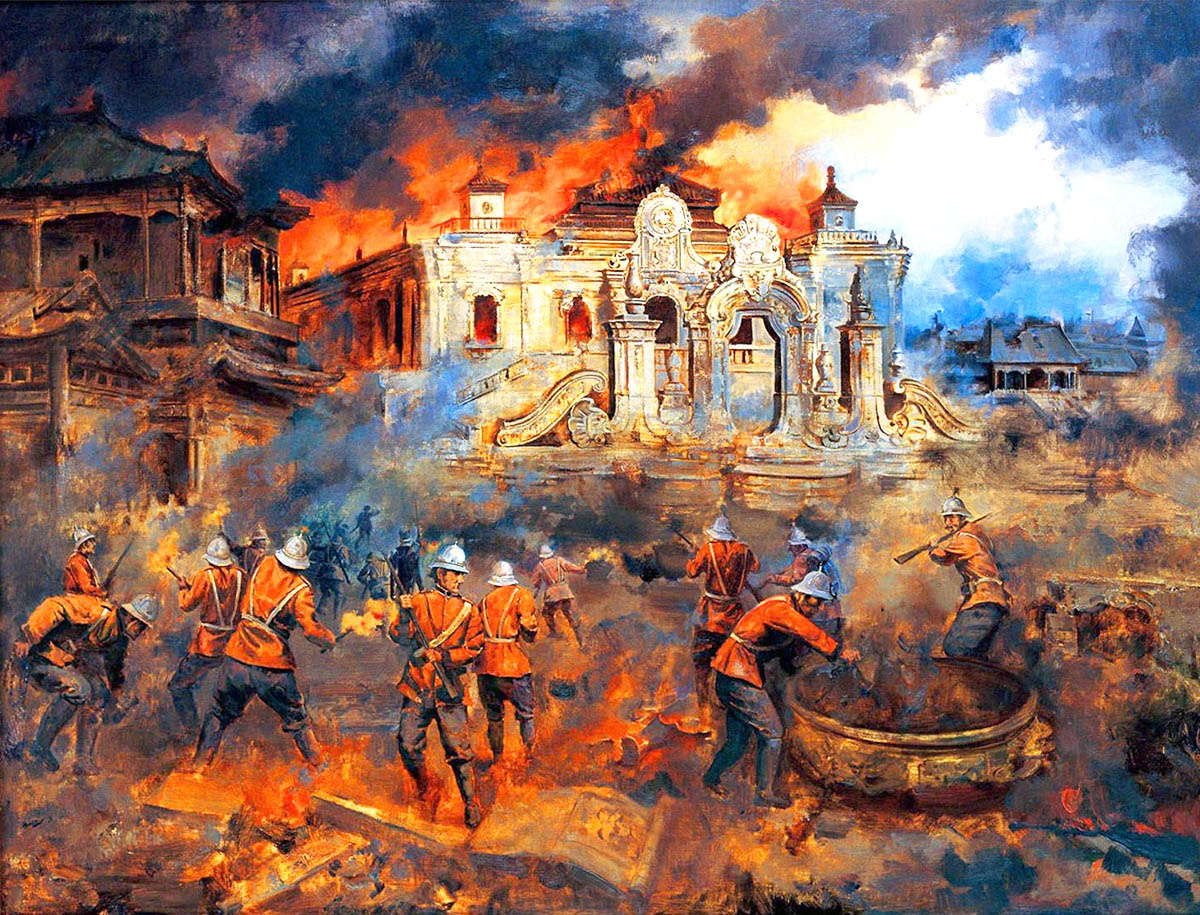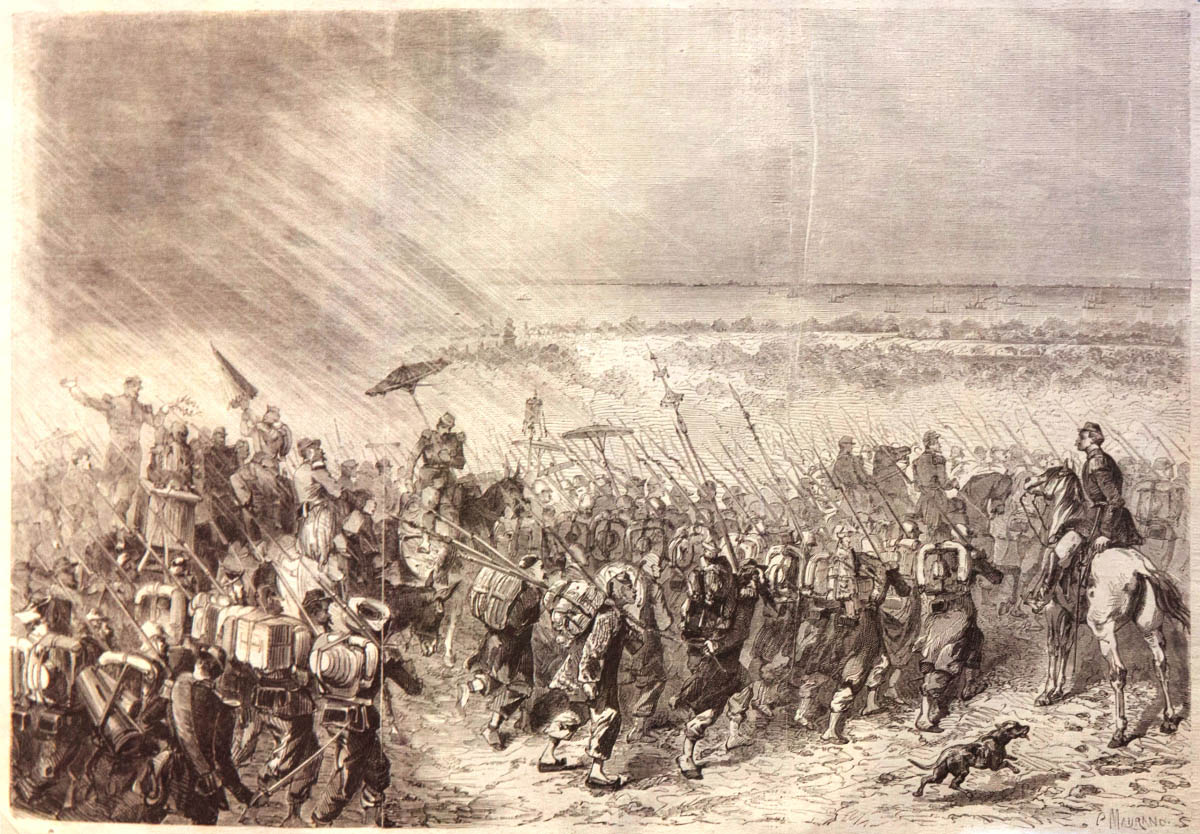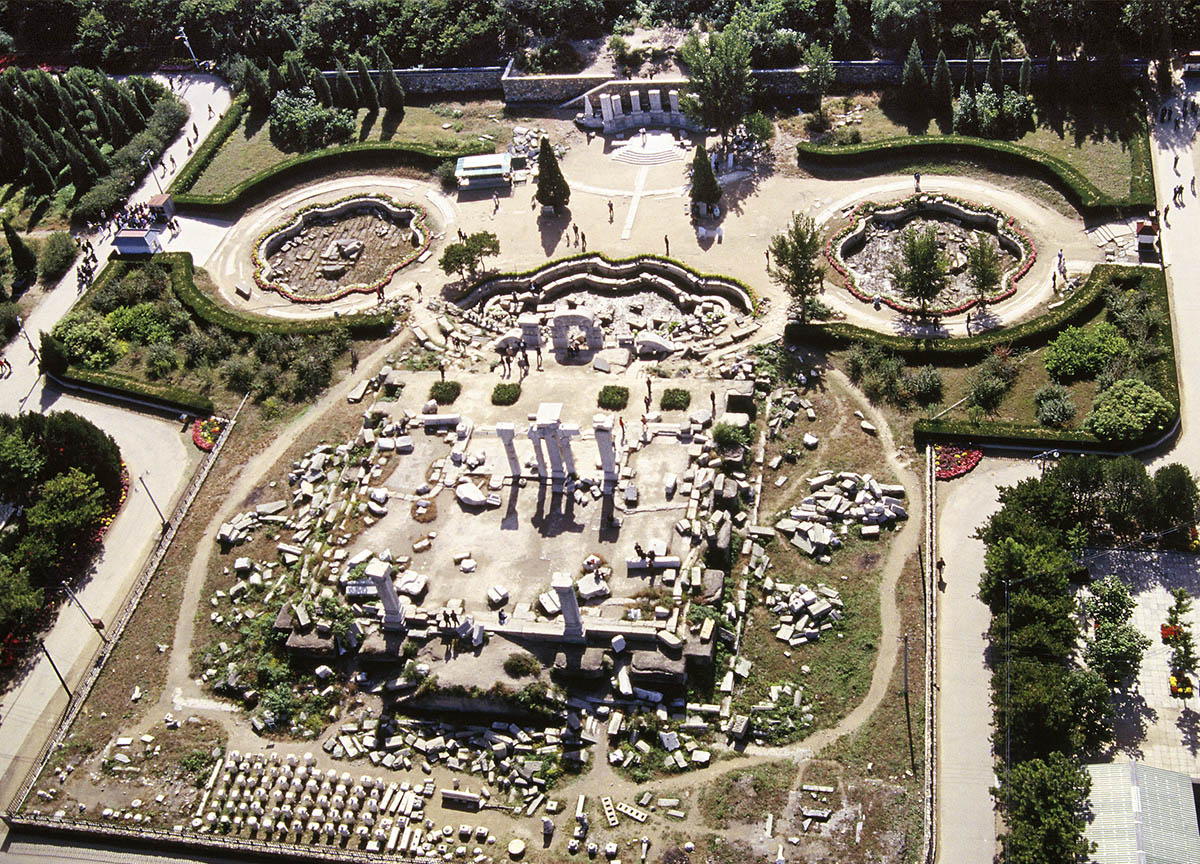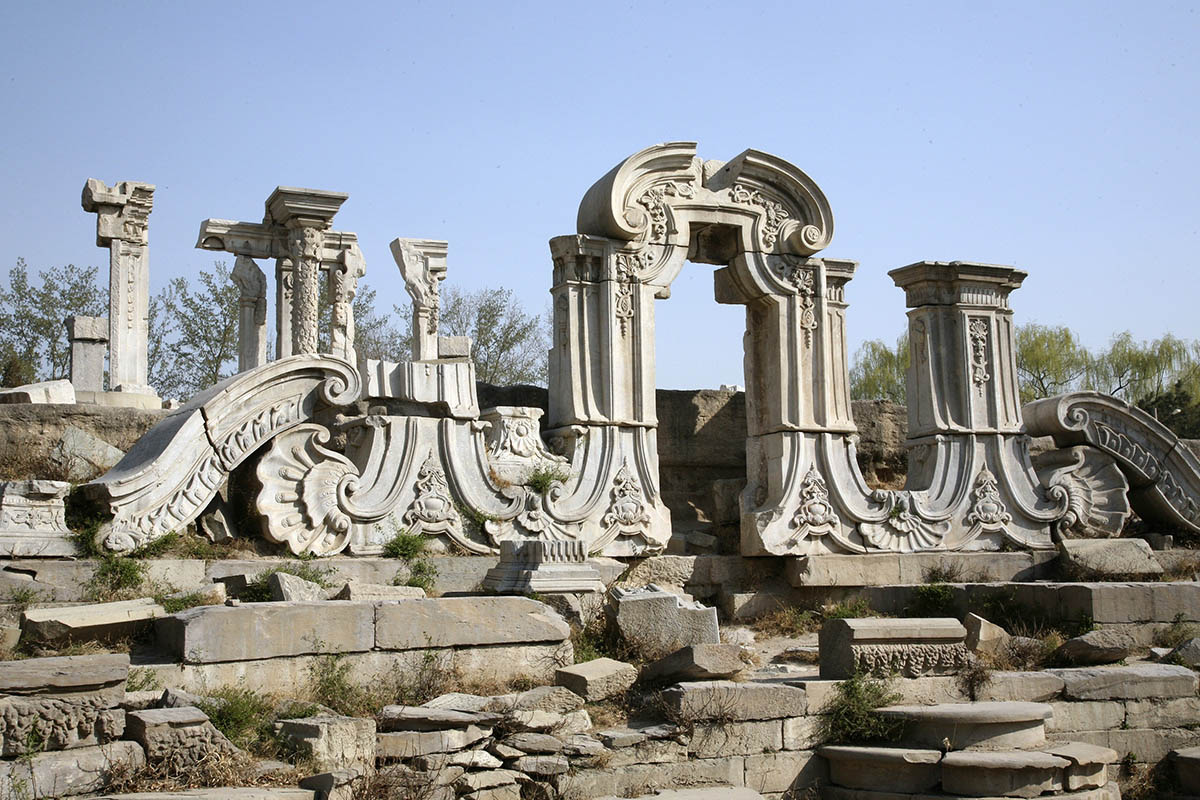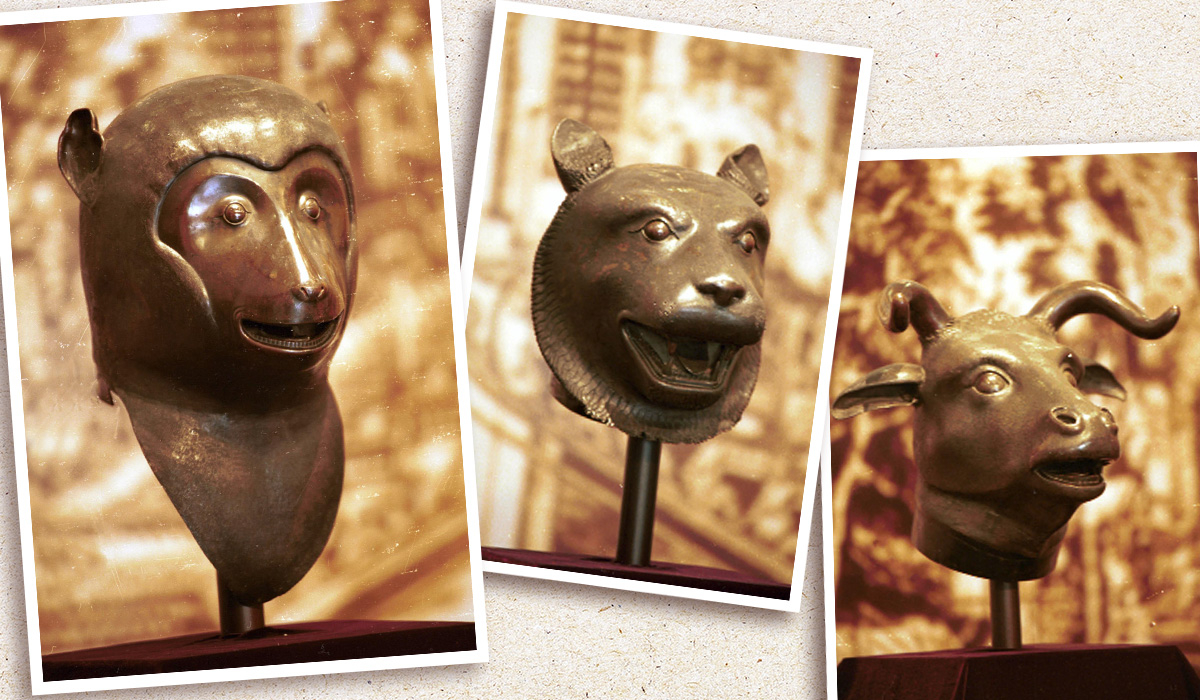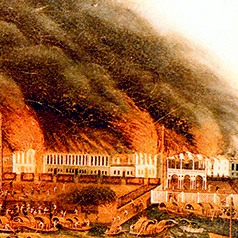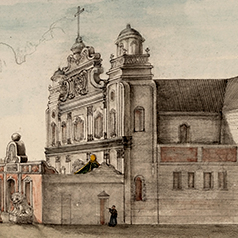In October 1860, after the Anglo-French alliance captured Beijing (北京), its soldiers received orders from high command to plunder at will. The horde fell upon the Old Summer Palace (Yuanmingyuan, 圓明園), a more than 150-year-old imperial pleasure garden located in what are now the northwest suburbs of Beijing. The world-famous royal compound was subjected to the soldiers’ frenzied looting then set ablaze. The subsequent fire burned for three days and three nights, reducing the garden and its marvels to rubble. Among the indignities China suffered from its imperialist invaders thus far, none had such a devastating impact as the Old Summer Palace’s destruction.
The Old Summer Palace, an imperial pleasure garden as well as a repository of priceless architecture and cultural relics, was plundered with impunity and set ablaze by the Anglo-French alliance. Countless splendors and the lives of over 300 eunuchs, palace maids, and craftsmen within the compound were claimed by the conflagration that followed, leaving smoke that lingered for more than a month.
Robert James Leslie McGhee, a chaplain to the British forces, gave an account of the Old Summer Palace’s destruction as follows: “Soon the wreath becomes a volume, a great black mass: out burst a hundred flames, the smoke obscures the sun; and temples, palaces, buildings and all, hallowed by age, if age can hallow, and by beauty, if it can make sacred, are swept to destruction, with all their contents monuments of imperial taste and luxury.” (How we got to Pekin: A narrative of the campaign in China of 1860)
Victor Hugo, the eminent French writer, penned a letter in 1861 condemning the barbaric act: “One day two bandits entered the Summer Palace. One plundered, the other burned... Before history, one of the two bandits will be called France; the other will be called England.”
|
|
What lessons can we learn from the destruction of the Old Summer Palace? |
|
|
See answer below. |
The Old Summer Palace was an expansive imperial resort garden that the Qing regime had developed and cultivated for more than 150 years. Lauded as the “garden of gardens”, it exemplified the pinnacle of Chinese and Western landscaping art and was also a repository of countless treasures. Pictured are paintings of two of the 40 garden scenes in the Old Summer Palace: Elegant Colour of the Western Peaks (西峰秀色) on the left and Dwelling of the Moon, Earth, and Clouds (月地雲居) on the right.
The Hall of the Calm Sea (Haiyantang, 海晏堂), a magnificent Western-style structure, was one of the most representative buildings in the Old Summer Palace. It housed a Chinese zodiac-themed water clock fountain that featured statues of the 12 animals of the Chinese zodiac cast in bronze. According to the order of the zodiac, a different animal would spout water from its mouth to mark each shichen (one shichen is equivalent to two hours) of the day. This installation is now famously known as the Great Fountain.
In October 1860, having successfully invaded Beijing, the Anglo-French alliance made a beeline for the Old Summer Palace and occupied it.
The soldiers of the Anglo-French alliance were awestruck upon seeing the extraordinary architecture and priceless treasures of the garden.
Shortly after occupying the garden, they began to ransack it. Pictured are French soldiers dancing to the military band’s music while dressed in plundered palace finery.
On 18 October, after carrying off all they could, soldiers of the Anglo-French alliance set the Old Summer Palace ablaze. The subsequent conflagration, which raged for three days and three nights, claimed the garden’s remaining architecture, treasures, and the lives of more than 300 eunuchs, palace maids, and craftsmen who were still within it, leaving smoke that lingered for more than a month.
In September 1860, a delegation of 39 British and French diplomats and non-combatants, sent to negotiate with the Chinese government, were taken prisoner. Among them, 20 were killed and the others were gravely injured. Incensed, the British Plenipotentiary, Lord Elgin, ordered the burning of the Old Summer Palace as a retribution and a lesson to the Qing government.
With the Old Summer Palace razed to the ground and their spoils secured, the Anglo-French forces finally marched off with what they “achieved”.
The bird view of the former “garden of gardens”. Only rubble remains today.
The ruins of the standing Great Fountain is a witness to the cultural catastrophe.
Victor Hugo, the French writer, wrote: “There was, in a corner of the world, a wonder of the world; this wonder was called the Summer Palace... This wonder has disappeared. One day two bandits entered the Summer Palace. One plundered, the other burned. Victory can be a thieving woman, or so it seems. The devastation of the Summer Palace was accomplished by the two victors acting jointly... We Europeans are the civilized ones, and for us the Chinese are the barbarians. This is what civilization has done to barbarism. Before history, one of the two bandits will be called France; the other will be called England. But I protest... This, Sir, is how much approval I give to the China expedition.” (Return letter to Captain Butler, who participated in the Anglo-French alliance. Penned at Hauteville House on 25 November 1861)
The Old Summer Palace’s destruction had a deep impact on the Chinese psyche. Although it is now the 21st century, China has never weakened its resolve to recover its stolen cultural relics. Pictured are the bronze heads of the monkey, tiger, and ox sculptures of the Great Fountain that have been returned to China.
Now and then, the public auction of the Old Summer Palace relic triggers protests from the Chinese government and the community. Occasionally, a corporation has paid an outrageous sum for a relic (an example being the bronze zodiac animal head sculptures pictured above) and then presented it to China as a gift. Yet, some feel that paying a fortune to recover stolen goods that China rightfully owns makes no sense. Nevertheless, efforts to reclaim the royal garden relics continue.
|
|
What lessons can we learn from the destruction of the Old Summer Palace? |
|
|
The Old Summer Palace was indeed an extravagance built at public expense. However, it was in cultural terms the crown jewel of Chinese art and culture, and its reckless destruction was a grave loss to the entire world. The Chinese condemned the imperialist warmongers for being no better than robbers. Yet the garden’s demise also drove home unpleasant truths such as “weak countries have no say in foreign relations”, “being a poor country is to be exploited”, and “being backward is to be bullied”. This encouraged self-reflection within China and the realisation that only by helping one’s own country develop and defend itself can its people’s rights and interests be safeguarded. |
Source of most photos used in this feature piece: Visual China Group (pictures 4, 8, 9), Fotoe (pictures 1, 2, 3, 5, 7 and 10), misc. photo sources.





